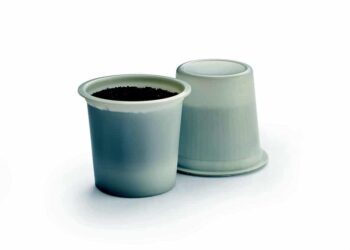A research team from Washington State University has developed an air filter made out of corn protein instead of petroleum products that can concurrently capture small particulates as well as toxic chemicals like formaldehyde that current air filters can’t.
“Particulate matter is not that challenging to filter but to simultaneously capture various kinds of chemical gas molecules, that’s more significant,” said Katie Zhong, professor in WSU’s School of Mechanical and Materials Engineering and a corresponding author on the paper. “These protein-based air filtering materials should be very promising to capture multiple species of air pollutants.”
With micron-sized pores, typical high efficiency particulate air filters, also known as HEPA filters, can capture the small particles but aren’t able to capture gaseous molecules. They are most often made of petroleum products and glass, which leads to secondary pollution when old filters are thrown away, Zhong said.
The WSU researchers developed a more environmentally friendly air filter made from corn protein fibers that was able to simultaneously capture 99.5% of small particulate matter, similar to commercial HEPA filters, and 87% of formaldehyde, which is higher than specially designed air filters for those types of toxics. Washington State University engineers report on the design and tests of materials for this bio-based filter in the journal Separation and Purification Technology.
The researchers chose corn to study because of its abundance as an agricultural product in the U.S. The corn protein is also hydrophobic, which means that the protein repels water and could work well in a moist environment such as in a mask.
The amino acids in the corn protein are known as functional groups. When exposed at the protein’s surface, these functional groups act like multiple hands, grabbing the toxic chemical molecules. The researchers demonstrated this by exposing a functional group at the protein surface, where it grabbed formaldehyde. They theorize that further rearrangement of the proteins could develop a tentacle-like set of functional groups that could grab a variety of chemicals from the air.
“From the mechanism, it’s very reasonable to expect that this protein-based air filter could capture more species of toxic chemical molecules,” Zhong said.
The three-dimensional structure that they developed also offers more promise for a simple manufacturing method than thin films of proteins that the research team developed previously. They used a small amount of a chemical, polyvinyl alcohol, to glue the nanofibers together into a lightweight foam-like material.
“This work provides a new route to fabricating environmentally friendly and multi-functional air filters made from abundant natural biomass,” Zhong said. “I believe this technology is very important for people’s health and our environment, and it should be commercialized.”
The researchers would like to do more testing, including using a variety of functional group structures and other toxic chemical molecules. In addition to Zhong, the work was conducted by graduate student Shengnan Lin, Ming Luo, Flaherty assistant professor in the WSU School of Mechanical and Materials Engineering, and post-doctoral fellow Xuewei Fu. The work was funded by a U.S. Department of Agriculture Sun Grant.

















